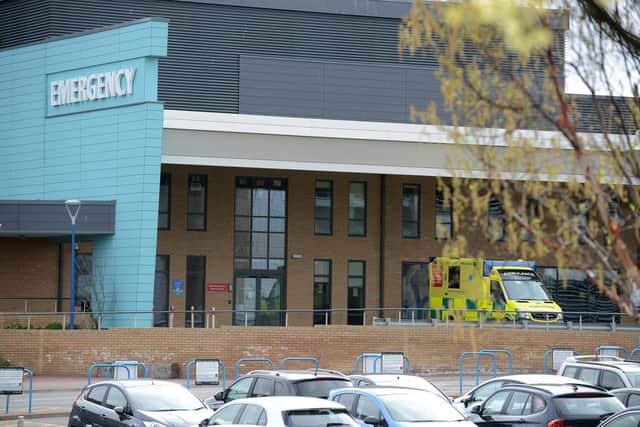More than a third of South Tyneside and Sunderland casualty patients waited longer than four hours last month
and live on Freeview channel 276
NHS guidance states 95% of patients attending casualty departments should be admitted, transferred or discharged within four hours.
But South Tyneside and Sunderland NHS Foundation Trust fell behind that target in May, when just 61% of the 12,483 attendances at type 1 A&E departments were seen within four hours, according to figures from NHS Digital.
Advertisement
Hide AdAdvertisement
Hide AdType 1 departments are those which provide major emergency services – with full resuscitation equipment and 24-hour consultant-led care – and account for the majority of attendances nationally.
It means 39% of patients at the South Tyneside and Sunderland Trust waited too long to be seen last month, compared to 42% in April, and 16% in May 2021.
Including the 8,469 attendances at other accident and emergency departments, such as minor A&Es and those with single specialties, 75% of A&E patients were seen by the trust within the target time in May.
At South Tyneside and Sunderland NHS Foundation Trust there were 747 booked appointments, up from 728 in April, and 536 patients waited longer than four hours for treatment following a decision to admit. The average time to treatment was 85 minutes.
Advertisement
Hide AdAdvertisement
Hide AdA South Tyneside and Sunderland Hospitals Trust spokesperson said emergency attendances rose 7.2% between April and May, with 75.2% of people seen on time, compared to a national performance of 73%, and an increase from April’s 22 73.2%.


Chair of the urgent and emergency care network for the North East and North Cumbria, Helen Ray, said the NHS took any delay seriously: “While we are performing above the England average for waiting times across urgent care, there is still more to do to reduce the time people are waiting.
“Initiatives include making changes to the way patients are clinically assessed and admitted, improving discharges from hospital, greater collaborations with pharmacies and a region wide improvement plan to address handover delays.
Patients could also help, she added: “The support of the public is also welcome and they can continue to help us by keeping 999 and A&E free for life-threatening conditions and thinking pharmacy, GP and 111 first.”
Advertisement
Hide AdAdvertisement
Hide AdThe King's Fund think tank warned patients are waiting longer in A&E departments for a "wide range" of reasons, including rising A&E attendances and emergency admissions to hospital, fewer hospital beds being available and staffing strains.
"The four-hour A&E waiting time standard is one of the most high-profile indicators of how the NHS is performing," it said in a recent report.
"The sustained declines in performance against this waiting time standard place a significant toll on patients and staff alike and are a clear indication of the pressures the wider health and care system is under."
The 95% standard has not been met across the NHS in England since July 2015 – and last month, just 73% of A&E attendances were admitted transferred or discharged within four hours, compared to 84% in May 2021 and 87% in May 2019.
Performance was worse in type 1 departments, where just 60% of patients were seen on time in May, down significantly from 76% during the same month last year, and 79% before the coronavirus pandemic.